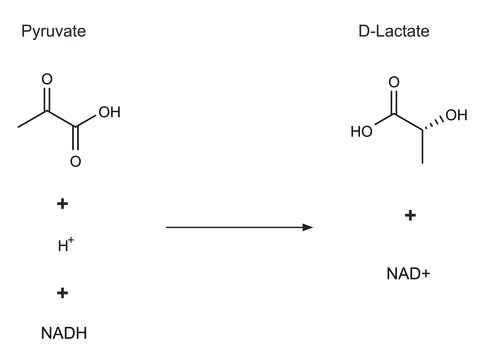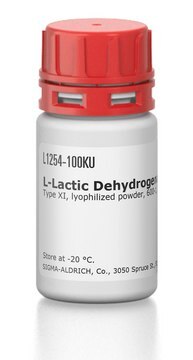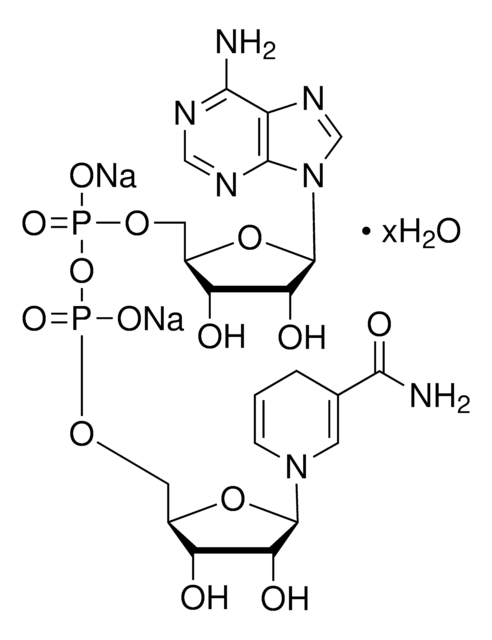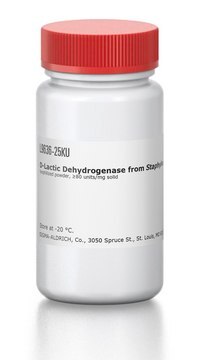L2011
D-Lactic Dehydrogenase from Lactobacillus leichmannii
ammonium sulfate suspension, ≥250 units/mg protein (biuret)
Synonym(s):
Lactate, (R)-Lactate:NAD+ oxidoreductase, D−LDH
About This Item
Recommended Products
form
ammonium sulfate suspension
Quality Level
specific activity
≥250 units/mg protein (biuret)
foreign activity
Malic dehydrogenase <0.5% of base activity
storage temp.
2-8°C
General description
Biochem/physiol Actions
Unit Definition
Physical form
Storage Class
12 - Non Combustible Liquids
wgk_germany
WGK 1
flash_point_f
Not applicable
flash_point_c
Not applicable
ppe
Eyeshields, Gloves, multi-purpose combination respirator cartridge (US)
Certificates of Analysis (COA)
Search for Certificates of Analysis (COA) by entering the products Lot/Batch Number. Lot and Batch Numbers can be found on a product’s label following the words ‘Lot’ or ‘Batch’.
Already Own This Product?
Find documentation for the products that you have recently purchased in the Document Library.
Articles
Instructions for working with enzymes supplied as ammonium sulfate suspensions
Our team of scientists has experience in all areas of research including Life Science, Material Science, Chemical Synthesis, Chromatography, Analytical and many others.
Contact Technical Service





